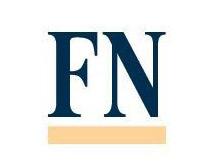
Behind the exchange-traded label
Investors in products bearing the exchange-traded label almost invariably assume they have invested in funds regulated under European Ucits rules.
In fact, the position is far from clear-cut. Whereas exchange-traded funds are listed funds with regulated exposures, exchange-traded notes and exchange-traded commodities lack either of these characteristics.
The most common ETN and ETC exposures are wrapped into a debt security, whose value is linked to the performance of designated investments.
Broadly, one type involves a senior, unsecured, unsubordinated note issued by a bank where an investor is not only exposed to an investment risk but also the ability of the issuing bank to stay afloat.
The other is generally created out of special purpose vehicles and collateralisation programmes. As the structure is unregulated, it is up to investors to ensure they understand the risks and mitigating factors the promoter introduces – or fails to introduce – to mitigate any future loss and create the protections implicit in a regulated fund structure.
Some significant differences between Ucits ETFs and ETNs and ETCs are: the investor often has 100% counterparty exposure to the issuing entity of the ETN or ETC – so, in the case of bankruptcy of the issuer, the investor may not receive back their full investment; fees for ETNs can be higher and less transparent than ETFs and fee disclosure for ETNs is not standardised (or regulated); and there are often additional fees for transaction costs, hedging and index licence costs on top of the annual investor fee.
In Europe, ETNs represent 31% of the universe of 1,880 exchange-traded products and 10.7 % of the $337bn invested by weight of money at the end of the first quarter of this year.
The Risk Conduct Retail Outlook published by the Financial Services Authority last year accepted that the note and commodity-based exchange-traded exposures might be “sometimes marketed and perceived by investors as being equivalent to ETFs”.
While this equivalence is the case in terms of trading and settlement procedures, it is not true in relation to their exposures and structural safeguards.
Far from an open market deal, ETN deals may be struck in private. It is left to product providers to decide whether exposures are appropriate and fund protections are efficient. And investors may shoulder the risk.
Additional protections end up incurring additional costs, leaving the risk/reward analysis for the investor.
While this is not unacceptable in itself, the retail investors may not appreciate the difference, not least because brokerage accounts fail to make a distinction between note structures and ETFs covered by European Ucits regulations. This lacuna needs to be addressed.
The term ETC is used to reference notes backed by the underlying commodity or equivalent security, but also describes credit-backed commodity notes which may – or may not – be collateralised. If it does exist, the collateral may not be of sufficient quality. Yet other variants use the term ETC to refer to exchange-traded currency products.
The utility of these instruments for the informed and experienced investor is not in question. But the near collapse of banking institutions has drawn attention to the risks of exchange-traded exposures.
It is ironic that ETFs are the eye of the storm, while ETNs and ETCs have escaped regulatory scrutiny and adverse publicity.
Regulators need to ensure this anomaly is addressed. Reform could result piecemeal from one-off investigations – in the US, the Massachusetts state regulator and the Securities & Exchange Commission are investigating a 2x VIX volatility ETN that lost half of its value in just two trading days in March.
The Financial Industry Regulatory Authority in the US also announced in March that it was reviewing an array of issues surrounding ETNs and other complex products.
It could result in regulation to ensure that inappropriate exposures or insufficiently robust delivery methods are not available to less-sophisticated investors.
